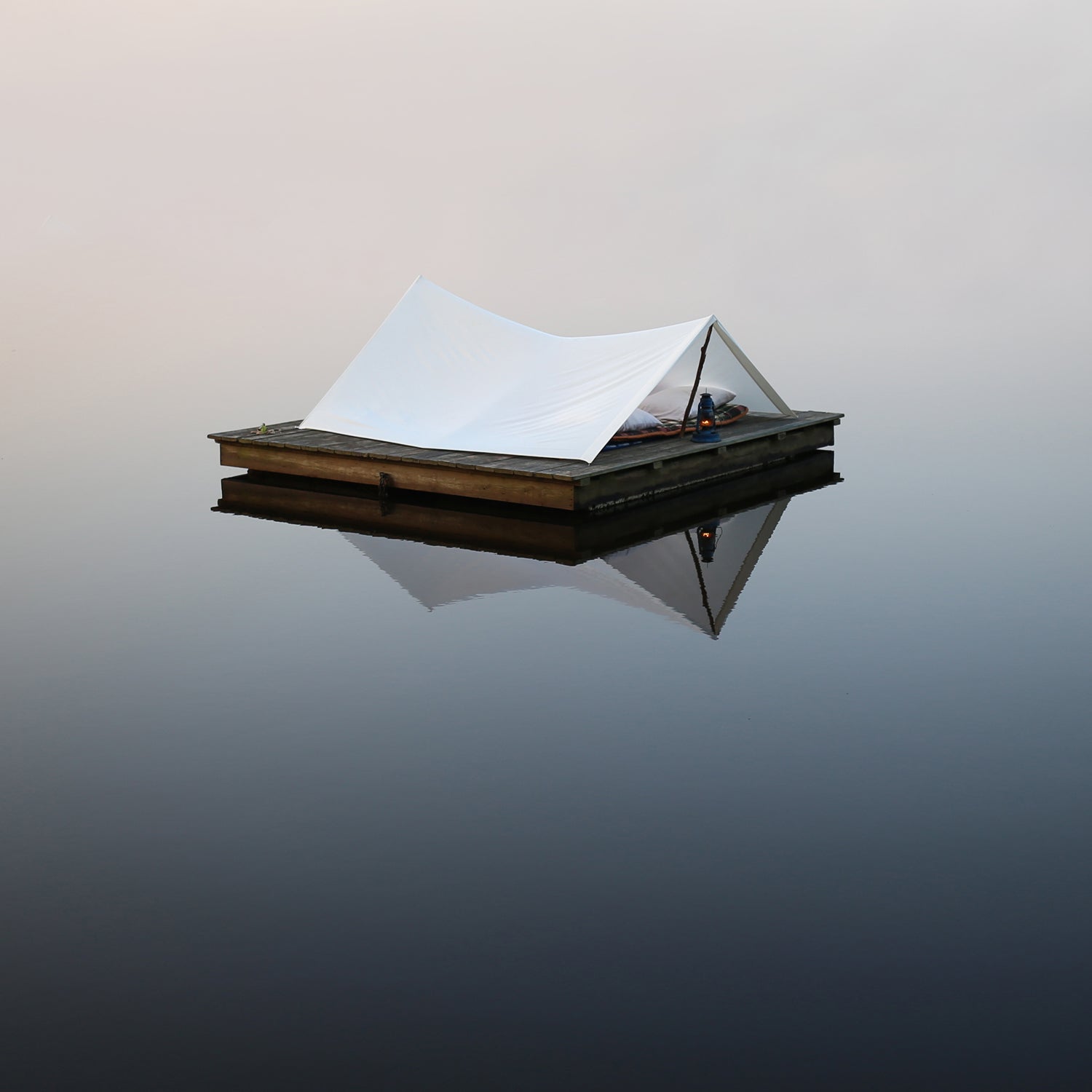We live in╠řthe 21st century, but╠řit still takes a good 30 minutes to board a plane (on a good day). And don't get us started on╠řthe╠řlodging horror stories! The outdated guidebooks! The soul-sucking process of renting a car!
That's why we are╠řrooting for these seven revolutionary ideas.╠řFrom an Airbnb for adventurous car rentals to pain-free new ways to board planes, these╠řinnovations╠řare changing how we get out and see the world.
1. Hipcamp Is Revolutionizing Campsite Booking
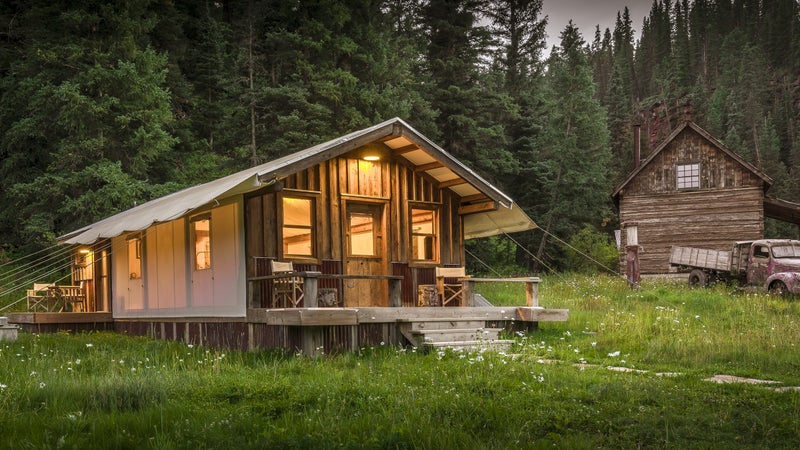
On New YearÔÇÖs Eve in 2012, Marin County, California, resident Alyssa Ravasio drove a few hours south to camp in Andrew Molera State Park, at a coastal meadow in Big Sur. It was the perfect place, as she puts it, ÔÇťto take in the first sunrise of the year.ÔÇŁ The only hitch: the parkÔÇÖs websiteÔÇöa bare-bones dot-gov run by the state of CaliforniaÔÇöneglected to mention a nearby surf break. A big swell was coming in, and Ravasio was caught without her board.╠ř
Inspired to create a better resource for campsite info and reservations, Ravasio, 27, learned how to code and launched in 2013. The site originally had 90 California state park campground listings, each with photos tracked down by RavasioÔÇÖs sisters and friends. But it grew quickly, transforming into a sleek hub with stunning photos, detailed information on more than 8,000 campgrounds in 50 states, and search tools that allow you to filter by activity or browse on an interactive map. Today, Hipcamp boasts more than 250,000 active users, and the company raised $2 million last year.
HipcampÔÇÖs goal is to be a one-stop source for everything from learning about to securing a spot in the nationÔÇÖs campgrounds. Its main hurdle? The way the government handles reservations for public campsites. Since 2005, a company called has administered and controlled campsite reservations for the Park Service, the Forest Service, and the Bureau of Land Management, among other agencies, giving it a monopoly but little motivation to provide better descriptions or features like user comments.╠ř
So last year, Hipcamp partnered with the Sierra Club, REI, and more than 50 other companies and nonprofits to pressure the government to open Recreation.gov to third-party booking. The campaign was a success: within two years, Recreation.gov will allow access to Hipcamp and other apps, and weÔÇÖll be able to say farewell to clumsy government booking.╠ř
Hipcamp is also creating a national network of campsites on private land. All too often, campgrounds owned by companies like KOA are grim roadside dirt patches packed with RVs. Hipcamp aims to change that, turning underutilized propertiesÔÇöfarms, ranches, even big backyardsÔÇöinto campsites by allowing owners to use its platform to rent them out. There arenÔÇÖt many available yet, and theyÔÇÖre mostly in California, but╠řthe company is aggressively scouting for openings and offering a bonus to anyone who refers a new host.* ╠řMeanwhile, campsite info has broken out of the Stone Age. Had Hipcamp existed before RavasioÔÇÖs trip to Big Sur three years ago, she could have seen one commenterÔÇÖs tip: ÔÇťMake sure to bring your surfboard.ÔÇŁ
ÔÇöDavid MacNeal
Our favorite private properties on Hipcamp
ÔÇöUpstate New York
Sleep in the shadow of the legendary walls of the Shawangunks, then wake up for a full day of sending. $38╠ř
ÔÇöCentral California
A perfect chance to sleep in a huge meadow overlooking the Pacific in Big Sur with a group of your friends. $300 for up to 15 people╠ř
ÔÇöNorthern California╠ř
No tent required here: a pair of off-the-grid geodesic-dome cabins, just steps from the Garcia River on the coast. $325 for up to ten people
*A previous version of this article stated that Hipcamp was offering bonuses to new hosts. The bonus is in fact only for referrals of new hosts.
2. New Companies Let You Use Your NeighborÔÇÖs Gear Shed or Borrow Their Stuff
Some make more sense than others. Presented on a scale of ÔÇťnot╠řso╠řsureÔÇŁ to ÔÇťsign me up!ÔÇŁ:
:╠řStash stuff in a neighborÔÇÖs space╠ř
: Eat a meal cooked by a stranger
: Pet-sit someone elseÔÇÖs best friend╠ř
: Borrow cameras and other equipment╠ř
:╠řRent a strangerÔÇÖs vessel
3. ║┌┴¤│ď╣¤═° Beta Is Better Than Ever
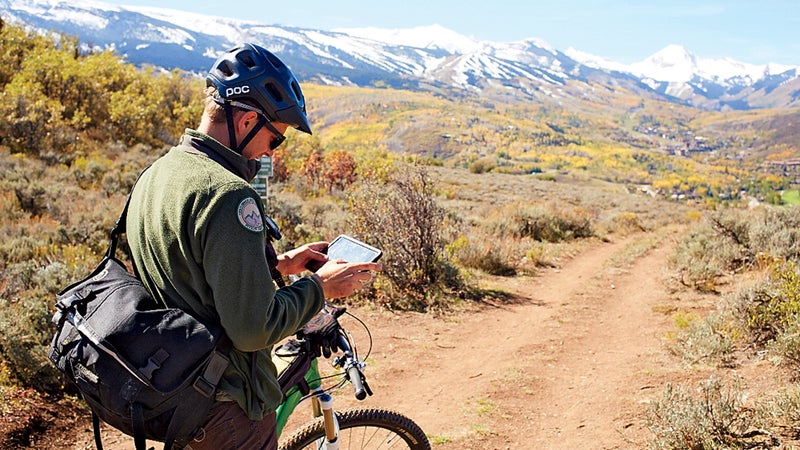
Ask a rock climber about his favorite crag and odds are heÔÇÖll direct you to its page. The online guide, run by a company called , is the biggest name in climbing betaÔÇöthree million users have contributed detailed, up-to-date information for more than 130,000 routes across the globe, from annotated photos of sport walls to guides to 31-pitch routes in Yosemite.
The site was co-founded in 2005 by Boulder, Colorado, climber Nick Wilder, 43, to harness the recent explosion in climbing info online. But he didnÔÇÖt stop there. Wilder began turning ║┌┴¤│ď╣¤═° Projects into an all-purpose outdoor resource when he launched in 2013. The site gives mountain bikers the same kinds of information that climbers have come to rely on, and in two years it has grown to half the size of its sister site, with 51,000 miles of user-added trails in its database. In April 2015, ║┌┴¤│ď╣¤═° Projects added , , and (for backcountry skiing).╠ř
The reach and depth of information on these sites attracted the attention of REI, and in May ║┌┴¤│ď╣¤═° Projects was acquired by the retail behemoth. ÔÇťThe sale gave us this opportunity to forget about selling ads and focus on building great products,ÔÇŁ Wilder says. These will include smartphone hiking guides to national parks, in conjunction with the National Parks Centennial in 2016. The guides will offer descriptions and ability level for every single trail, and like the companyÔÇÖs other products, theyÔÇÖll work offline, so you wonÔÇÖt need a cell signal or Wi-Fi.
Some users think thereÔÇÖs a downside to ║┌┴¤│ď╣¤═° ProjectsÔÇÖ expansion. Don Morris, a Denver-based Mountain Project user since 2007 who has made more than 400 contributions to the site, said he wasnÔÇÖt interested when he got an e-mail invite to Powder Project. ÔÇťIt totally doesnÔÇÖt make sense to say, ÔÇśHereÔÇÖs a great place to backcountry ski,ÔÇÖ ÔÇŁ he said. ÔÇťOnce IÔÇÖve published that, I go out there for my day and itÔÇÖll be trashed.ÔÇŁ╠ř
Wilder doesnÔÇÖt see it that way. ÔÇťI use the sites and find all kinds of great trails and go places that I wouldnÔÇÖt otherwise. I believe in sharing this stuff.ÔÇŁ
ÔÇöBryan Rogala╠ř
4. Your Next Guide Could Be a Badass
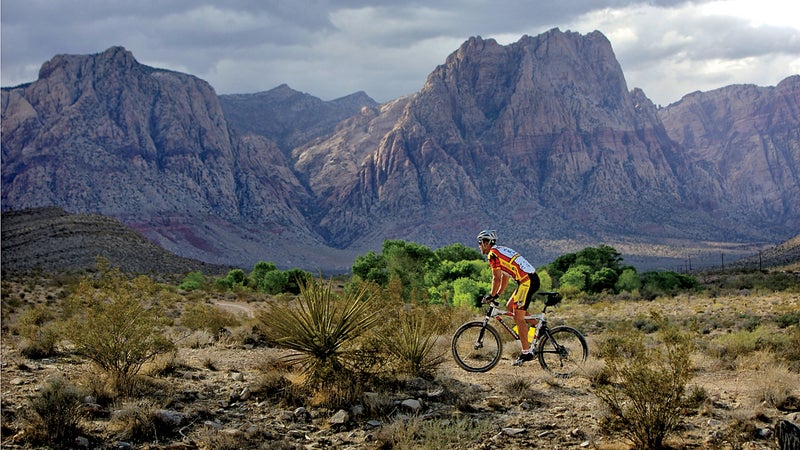
New, small guiding outfits are making their mark with extremely overqualified employees.
Escape and Explore
specializes in urban thrills in and around Cape Town and pioneering trips throughout the continent, from SUPing BotswanaÔÇÖs Okavango Delta to hiking South AfricaÔÇÖs undiscovered Wild Coast. Its guidesÔÇÖ r├ęsum├ęs include competing in the and summiting Kilimanjaro barefoot.╠ř
Book This: Nine-time South African womenÔÇÖs surf champ leads excursions out to the remote Maputaland Marine Reserve to access empty waves near Zulu villages. .
Irwin Guides
Two Crested Butte, Colorado, companies in December 2013 to offer year-round adventures, like mountaineering in Bolivia and backcountry splitboarding in Japan. Its guides are experts, like former North American ski-mountaineering champion Jeff Banks, but also down-to-earth enough that youÔÇÖll look forward to sharing a drink with them around the fire.
Book This: Big-mountain skier has appeared in critically acclaimed ski porn like Solitaire and Valhalla. HeÔÇÖll take you to the powder promised land during IrwinÔÇÖs five-day backcountry camp in Crested Butte. .
Epic Europe
A luxury outfitter focused on alpine adventures in Switzerland, the company is run by a former Rossignol-sponsored freeskier and a Teton Gravity Research movie producer. As the pedigree might suggest, Epic Europe offers outings more adventurous than the staid competition, like untracked powder-day face shots and Matterhorn summits.╠ř
Book This: Ride SwitzerlandÔÇÖs Rhone Valley with born-and-raised local . The former pro skier is no slouch on a mountain bike and will show you the best singletrack in Zermatt and Verbier, with detours for wine and to villages otherwise accessible only by cable car. .
ÔÇöJen Murphy
5. You Can Vacation with a Stranger's Car
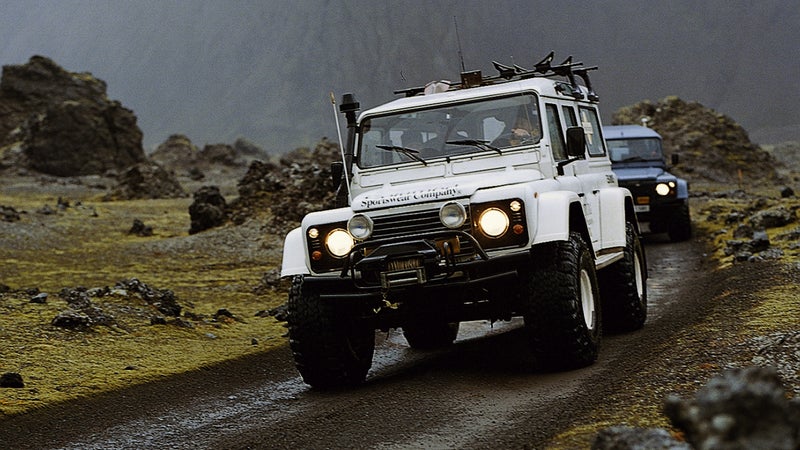
There was a time when it may have felt strange to crash in a strangerÔÇÖs apartment on a trip. But with the help of a slick, easy-to-use website, Airbnb made staying in a random personÔÇÖs house a normal way to travel. Now is doing the same thing with car rentals.╠ř
The affordable options at most traditional rental companies are exceptionally boring. A beige Chevrolet Cruze is fine if youÔÇÖre attending an insurance-adjusters conference in Des Moines, but what if youÔÇÖre hauling camping gear to the end of a dirt road, say, or surfboards to the beach?╠ř
For more adventurous travel, the appeal of RelayRides becomes obvious with a quick scan through the listings. Flying into Denver for a ski weekend? ThereÔÇÖs a four-door Tacoma with snow tires, ski rack, and luggage pod available for $83 per day. Go native in L.A. with a Porsche convertible ($50), or play like a billionaire coding genius in the Bay Area, where thereÔÇÖs a whole fleet of Teslas for rent (starting at $179).
WhatÔÇÖs the motivation for owners to loan out their wheels? Some cars often sit unused; the company offers a way to put them to good use, and owners keep 75 percent of whatever they charge. Renters handle gas, and the companyÔÇÖs insurance covers the vehicle while itÔÇÖs checked out.╠ř
The RelayRides website does everything it can to make the rental experience seamless, but the reality is that youÔÇÖre making a deal with another person. Car owners might have ground rules; airport pickup could mean a detour to drop off the carÔÇÖs owner. Those sorts of logistics could be deal breakers for travelers used to walking right up to a rental counter and hitting the road. But the company has seen revenue quadruple over the past year and has raised more than $53 million in investments from Google Ventures and other venture-capital firms. And a lack of concierges and continental breakfasts hasnÔÇÖt stopped Airbnb.
ÔÇöChris Cohen
6. Digital Tools Are Now So Good, You WonÔÇÖt Miss Guidebooks
The social-fitness app now offers city guides featuring classic routes and the best stops.
╠ř
This hyper-detailed site devoted to ColoradoÔÇÖs highest peaks makes for oddly compelling reading.╠ř
╠ř
The definitive road-tripping app, with up-to-the-minute info about traffic and speed traps from fellow users.
ÔÇöC.░ń.╠ř
7. Getting On and Off Airplanes Could Soon Go Much Faster
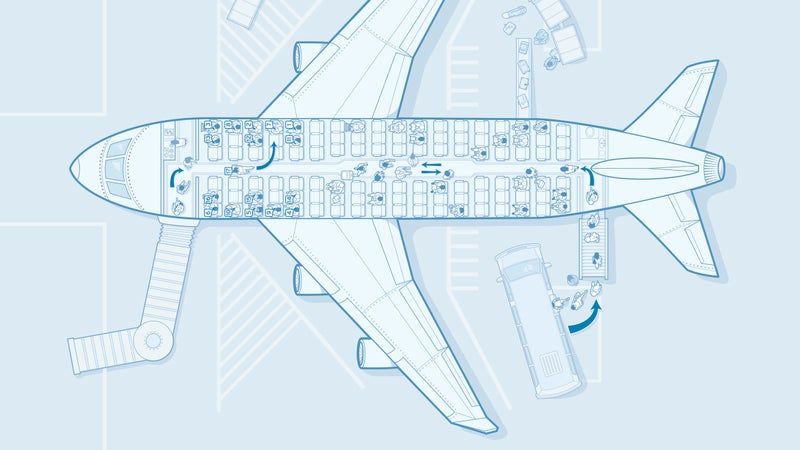
We break down three proposals for better boardingÔÇöand tell you whoÔÇÖs doing it best
ÔÇöMatt Bell╠ř
Do the Math
A scientist named Jason Steffen calculated the fastest boarding method: From back to front, fill every other rowÔÇÖs window seat on one side of the plane, then the other. Repeat on the skipped rows. Board the middle seats and the aisles the same way. In tests, boarding went twice as fast.╠ř
Odds of Adoption: It could work! It doesnÔÇÖt require new airport infrastructure or planes. ItÔÇÖs not practical with families and late arrivals in the mix, but Dutch carrier KLM is working on a similar scheme.
Build Fatter Planes
A German design firm thatÔÇÖs wider in the middle, to accommodate double doors and an aisle broad enough for people to pass each other. The firm claims that boarding could be accomplished in ten minutes.
Odds of Adoption: When pigs fly. The big door weakens the structure, and the fat middle isnÔÇÖt great for aerodynamics. Still, plane manufacturer Airbus purchased the patent.
Use Both Doors
Planes have an entrance at the back, too. Using it would help immensely.╠ř
Odds of Adoption: European carriers like EasyJet already do this, by positioning staircases on the tarmac. Most U.S. airports use jet bridges that go only to the front door. Alaska Airlines has experimented with front and back bridges in San Jose and Seattle; they typically save ten minutes. Adding them to every airport would be costly but not impossible.╠ř
The Carrier That Gets It Right
Boarding is more civil with fewer passengers stashing carry-ons in the overhead bins, and itÔÇÖs noticeably quicker on airlines with free luggage check. While bag fees raked in $3.5 billion last year, it costs airlines $30 for every minute a plane sits at the gate, so better efficiency could boost both profits and customer happiness. Southwest doesnÔÇÖt charge for bags, and its open seating by boarding group is the most efficient method currently in use. Meanwhile, the carrier is consistently profitable and ranks high on customer-satisfaction surveys.
ÔÇöC.░ń.


